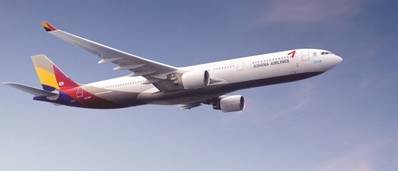Asia Airlines Hedging Big Part of Fuel Use
Top Asian airlines are hedging a substantial portion of their jet fuel usage this year, a Reuters survey showed, signaling they expect prices of the fuel to be firm and indicating sustained pressure on their profit margins.
Jet fuel makes up at least 30 percent of most airlines' overall operating costs and an effective hedging strategy is crucial as heightened competition forces carriers to cut fares and operate on thin margins.
While there should be sufficient supply of jet fuel in Asia this year to meet buoyant demand driven by healthy passenger traffic, airlines are unlikely to benefit from lower prices.
Jet fuel prices are market based - unlike diesel, kerosene and some other fuels which are subsidized in nations such as China, India and parts of Southeast Asia - and users pay rates that are closely linked to crude oil prices.
Geopolitical tensions are adding to the uncertain operating environment. Industry body International Air Transport Association (IATA) said last month that airlines globally expect to make $1 billion less profit this year than previously hoped, as the Ukraine crisis pushes up oil prices.
And research firm S&P Capital IQ said in a report last quarter that earnings of flag carriers, especially top-tier airlines, will be pressured by intense competition from low-cost carriers and relatively firm jet fuel prices, even as the Asian airline industry's overall profits for 2014 rise.
Japan Airlines (JAL), Asia's second-biggest airline by market value, is hedging about 40 percent of its fuel consumption in the 2014 financial year, similar to volumes seen in the previous year, a spokesman of the airline said.
"Hedging helps us to reduce the risk of volatile and potentially rising fuel costs in the long term. This hedging will be operated monthly," the spokesman said in an email.
ANA Holdings Inc's hedge ratio for its 2014 financial year is 45 percent, similar to the 2013 and 2012 financial years, said a spokesman for Japan's largest carrier.
Korean Air Lines generally keeps its hedging volumes around 30 percent of its annual fuel consumption and this year is no exception, a spokesman said.
The spokesmen of JAL, ANA and Korean Air declined to divulge price details of their hedges.
CATHAY, SIA
Consulting firm Energy Aspects estimates Asia's overall availability of jet fuel at nearly 2.491 million barrels per day (bpd) in the fourth quarter of 2014 versus demand of 2.412 million bpd. The last quarter of a year is typically the busiest for airlines due to holiday travel.
Brent crude has averaged $108 a barrel so far this year against 2013's average of $109. And jet fuel JET-SIN has averaged $121.20 a barrel this year compared to $126.62 last year and $125.95 the year before.
Airlines may hedge a big portion of the fuel purchases during the times they believe oil prices will be firm but they'll refrain from boosting hedging volumes substantially. A plunge in prices, though, will draw them out as they will seek to protect against future rises in prices.
Cathay Pacific Airways, which consumed 39.5 million barrels of fuel in 2013, did just that in April 2013 when it took advantage of a brief drop in fuel prices to extend fuel hedging into 2016, the Hong Kong airline disclosed with its earnings in March this year.
"We are currently about 25 percent covered for 2014 and the first half of 2015 at Brent prices of more than $94 to $95 a barrel, and about 11 percent for the second half of 2015 and the first half of 2016," its spokesman said.
"Our hedging coverage changes over time and depends on different levels of Brent oil prices," he said, adding that the airline's hedging coverage ranges from 10 to 60 percent for the next 12 months.
Singapore Airlines, Asia's biggest airline by market value, which hedges between 20 and 60 percent of its fuel requirements, went for the cap of 60 percent for the second half of its financial year that ended in March at $118 a barrel of jet fuel prices, a spokesman said.
The airline will provide guidance on its hedging strategy for the 2014 financial year when it releases annual results on May 8, the spokesman added.
Australia's Qantas Airways, Indonesia's Garuda , Malaysian Airline and Thai Airways did not comment on their hedging positions when contacted.
Chinese carriers, among the biggest in Asia by revenue, haven't hedged their fuel buys for the past several years after suffering losses on their hedges from extreme oil price volatility in 2008, said Kelvin Lau, analyst at Daiwa Capital Markets.
China Eastern Airlines confirmed it is not undertaking fuel hedging currently. China Southern Airlines could not be reached for comment.
(By Seng Li Peng; Additional reporting by; Siva Govindasamy and Jane Xie in SINGAPORE and Fang Yan in BEIJING; Editing by Manash Goswami and Muralikumar Anantharaman)









